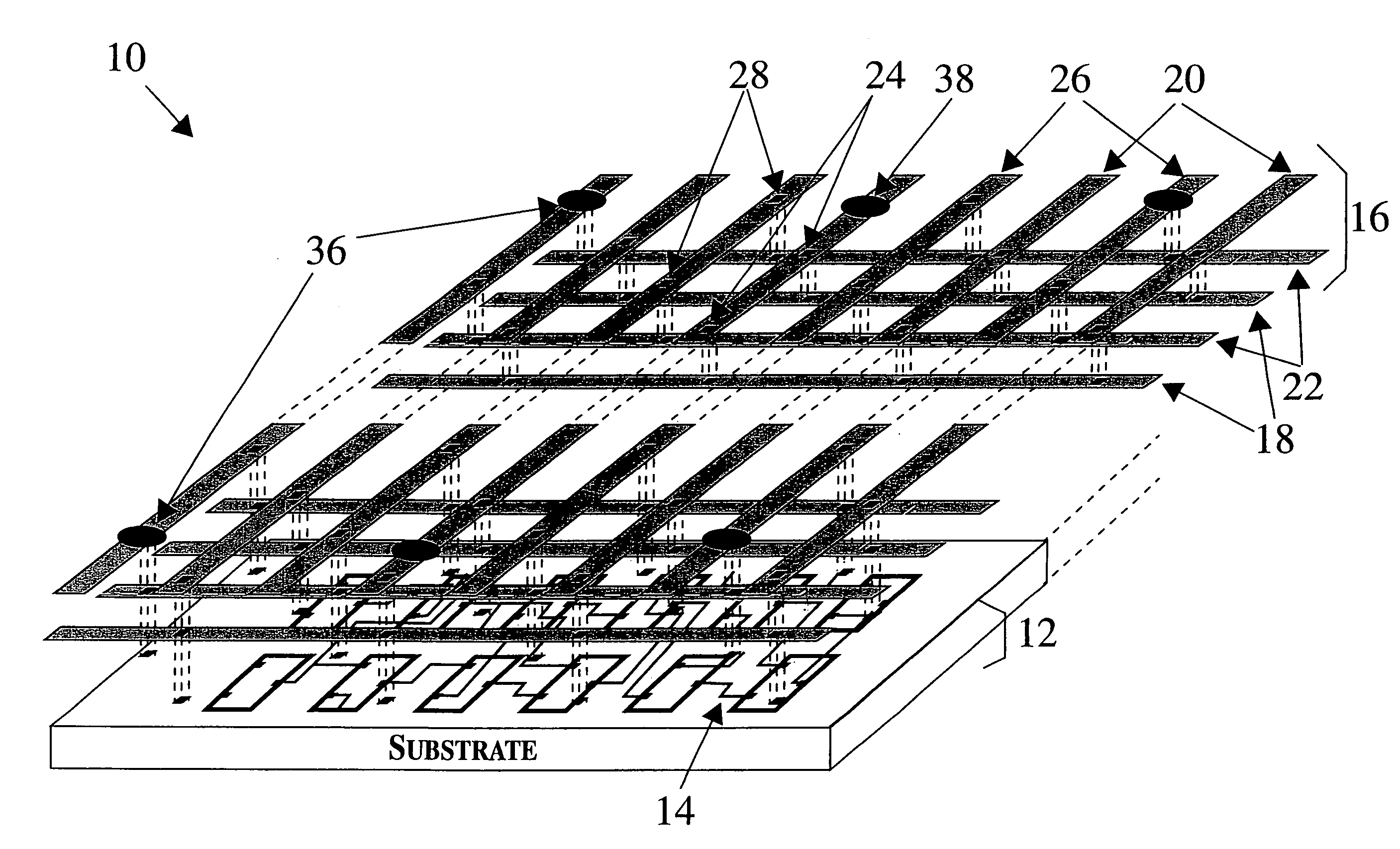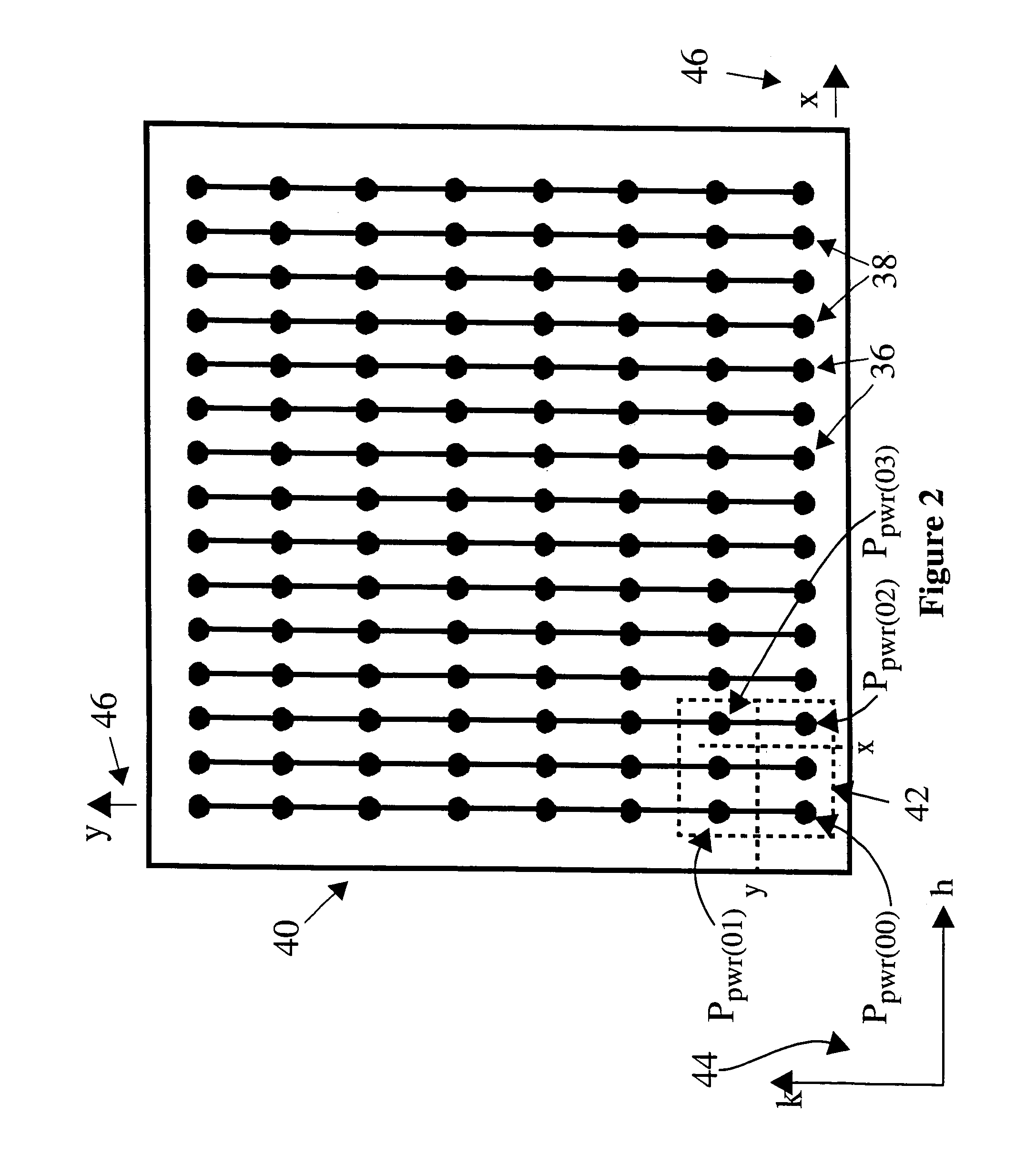Method and system for identifying and locating defects in an integrated circuit
a technology of integrated circuits and defects, applied in the direction of testing circuits, resistance/reactance/impedence, instruments, etc., can solve the problems of circuits that have internal shorts, and therefore, circuits that are defective, and achieve the effect of reducing the effect of contact resistan
- Summary
- Abstract
- Description
- Claims
- Application Information
AI Technical Summary
Benefits of technology
Problems solved by technology
Method used
Image
Examples
Embodiment Construction
[0023]The present invention comprises a method and system for testing integrated circuits (“IC”s), particularly large-scale digital ICs, during production, after the circuit die, or chip, has been fabricated but before it is packaged. The invention takes advantage of the dynamic response of the power grid of the IC device under test (“DUT”) both to determine whether the DUT is defective and, if so, to locate the defect. To provide useful terminology and to assist in understanding the description of the invention herein, it is useful first to describe some pertinent features of a typical IC that the invention may be used to test.
1. Typical Integrated Circuit Structure
[0024]Referring to FIG. 1, a typical IC die 10 includes a substrate 12, on which circuit devices such as transistors, resistors and capacitors are formed, signal routing conductors 14, and a three-dimensional power distribution conductor network, or power grid, 16. The power grid includes layers of metallic conductors (c...
PUM
 Login to View More
Login to View More Abstract
Description
Claims
Application Information
 Login to View More
Login to View More - R&D
- Intellectual Property
- Life Sciences
- Materials
- Tech Scout
- Unparalleled Data Quality
- Higher Quality Content
- 60% Fewer Hallucinations
Browse by: Latest US Patents, China's latest patents, Technical Efficacy Thesaurus, Application Domain, Technology Topic, Popular Technical Reports.
© 2025 PatSnap. All rights reserved.Legal|Privacy policy|Modern Slavery Act Transparency Statement|Sitemap|About US| Contact US: help@patsnap.com



